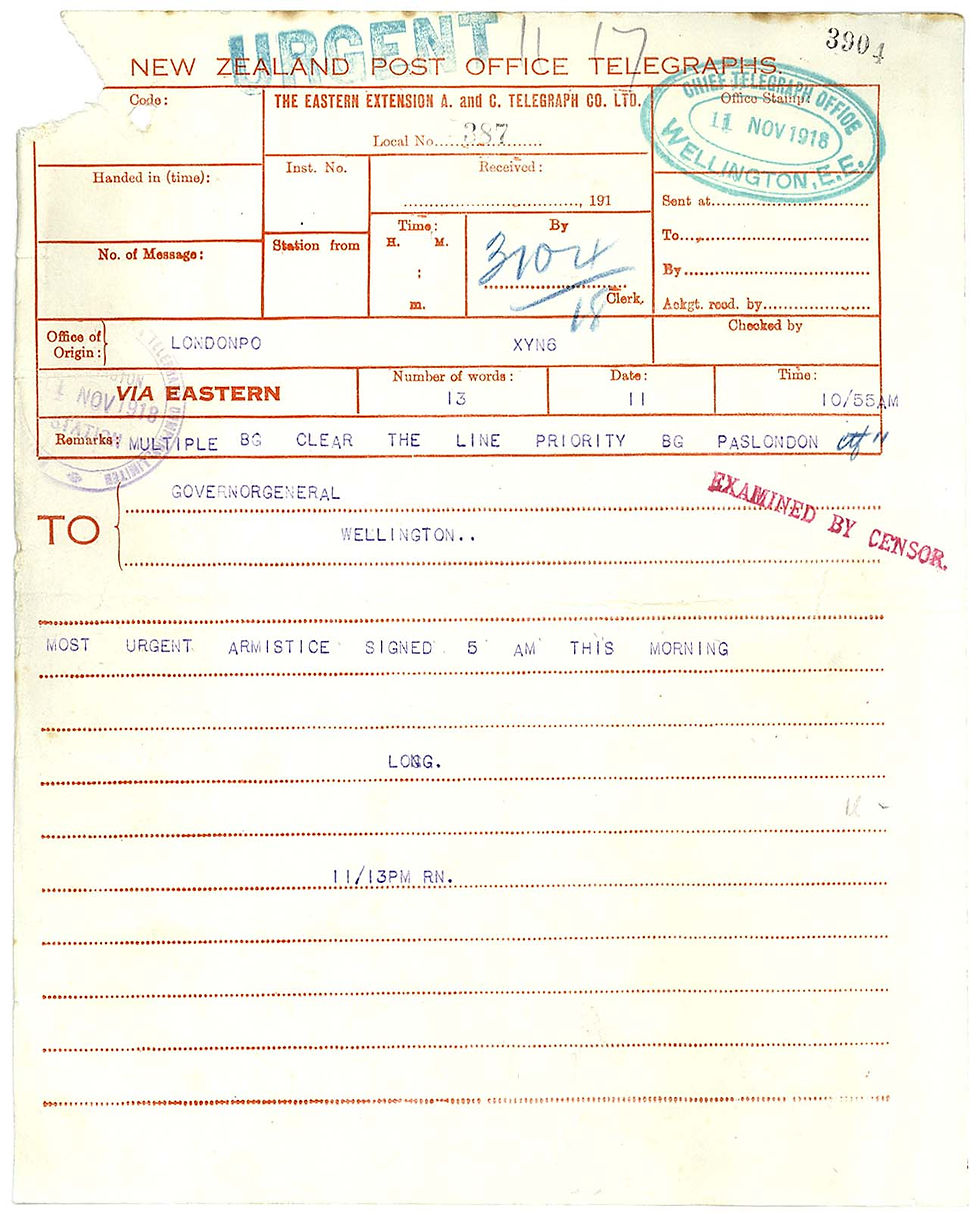The Peace That Will End War
- GCI Auckland
- Nov 8, 2014
- 3 min read
This weekend and throughout the coming week many people in Europe and around the world will remember the Armistice that was signed at 11am Paris time on the 11thNovember, 1918.

It was a pre-arranged event. The terms had been under discussion for months beforehand, and all sides agreed to them finally in the early morning of the 11th. No one, however, told the troops, many of whom continued to be slaughtered on the Western Front battlefields in the hours leading up to the official signing, which took place, famously, in a railway carriage in a French forest.

It was HG Wells, the science fiction writer of the Time Machine and the War of the Worlds, who dubbed World War One “the war to end war”. Of course, it did not end war at all, and in the ensuing 100 years since he made that remark not a decade has gone by without war.
Biblically speaking it is not a war that will end all wars. Rather it is a peace. It’s the peace of Christ. We pay respect to those who were lost in war through our Remembrance ceremonies. God also remembers them. He remembers them through the peace of Christ, and therefore there is hope, not just for the end of warfare, but also for the future of the dead and of the living.
As we think of war, let’s remember the peace of Christ.
It’s the only hope.
james.henderson@gracecom.org.uk
(Article used by permission from Because)
(photo: Imperial troops in the Victory Parade, Paris, 1919. Royal New Zealand Returned and Services' Association :New Zealand official negatives, World War 1914-1918. Ref: 1/2-014352-G. Alexander Turnbull Library, Wellington, New Zealand.http://natlib.govt.nz/records/22753081) (Notice image: Marks, Marcus Francis, 1863-1951. Notice. If official notification is received that an armistice with Germany has been signed, the fact will be announced to the public by the firing of guns. ... By authority, Marcus F Marks, Government Printer, Wellington - 1918.. Ref: Eph-B-WAR-WI-Peace-1918-01. Alexander Turnbull Library, Wellington, New Zealand.http://natlib.govt.nz/records/23240373)
Telegram announcing Armistice

On 11 November 1918 an armistice was signed between the Allies and Germany, ending the hostilities on the Western Front. The German leader Kaiser Wilhelm II had abdicated the day before, which opened the way for an armistice to be negotiated. The signing of the armistice took place in a train carriage in a forest in Northern France. Here the German delegation, headed by Matthias Erzberger, agreed to a list of thirty four terms effectively leading to the demilitarisation of Germany. While not technically a surrender, the terms of armistice centred around the termination of military hostilities at 11am of the day of signing, the withdrawal of German troops from occupied territories, and the promise of reparations for war damage. Six months later these terms would form the basis for the Treaty of Versailles, which formalised the peace agreements between the Allies and Germany.
News of the armistice was quickly transmitted around the world, and this telegram was received from the London Post Office by the Governor-General in Wellington at 10.55am. The announcement was officially published on 12 November in New Zealand and celebrations were held in many places around the country, despite the dangers of the influenza pandemic which had arrived in New Zealand a month earlier. This item comes from a record group of secret telegraphic reports on the war situation from 1917-1918, which is part of the records of the Governor-General’s office.
With thanks to: